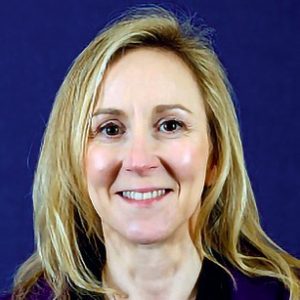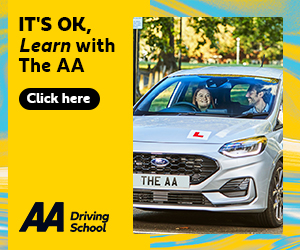Ron Ragsdale, in conversation with Dr Anne O’Keeffe
As a child in Ireland you will have had to study Irish as a second language in school – or, if you were educated in Irish, English as a second language. What did being taught a second language teach you about what to do – and not to do – as a language teacher?
Irish is a compulsory subject in Irish schools, so basically, from the age of about 5 to 18, we learn Irish or, in some cases, go to Irish-medium immersion schools. I spent one year at an Irish medium school when I was 12 and I also studied Irish within my university degree. This learning experience has informed me immensely as an applied linguist. The most successful method of learning Irish, for me, was total immersion, without a doubt.
When I lecture on language teaching methodologies on our Masters in Applied Linguistics, I reflect so much on my learning of Irish. As a learner of Irish, I experienced a mix of the Grammar Translation Method (e.g. rote learning of verb inflections and tenses, lists of vocabulary, reading literary texts in Irish, etc.) and the Audio-Lingual Method (learning through repetition drills and dialogues). To a much lesser degree, I also experienced some communicative activities.
Overall, it’s taught me so much about the importance of listening and reading so as to gain not just words but their collocates and their patterns in context. It’s taught me much about explicit and implicit learning. I debate a lot about how languages are learnt, and whether we should focus on form or meaning in language teaching, with my MA and PhD students. From my own experience, I think if the learner is open to learning, both form- and meaning-focused instruction will be of benefit.
How would you explain to your younger teacher self the links between academic discourse analysis and the language classroom?
If I met my younger teacher self, I’d probably have advice on a lot of things! On the link between what I now know about discourse analysis, my top tip would be to allow ‘wait time’ when you ask a question. Don’t immediately pounce on a student to answer the question, allow a few seconds at least to look around the room and to give students time to think.
This ‘wait time’ allows all students to cognitively engage with your question. There is scope to rephrase the question so that learners hear it a second time. If you nominate a student to answer quickly, then there is no opportunity for cognitive engagement to take place. It creates what Steve Walsh would call ‘a space for learning’ through the strategic use of teacher talk. In terms of classroom management, it also keeps everyone on their toes!
What is the most important thing teachers themselves can learn from a Learner Corpus?
A learner corpus is simply an electronic collection of learners’ writing or speaking. It has to be carefully sampled, for example, based around certain principles, but any teacher, with consent from learners, can collect samples of learners’ language and analyse it. There is free software available, such as Antconc, and lots of online tutorials on how to use the software.
By looking carefully at the language of our learners, we can become more informed about what they are finding difficult. This may be as a result of L1 interference but not always. Some errors are developmental. All learners, whether in first or second language acquisition, find some aspects of language tricky.
“From my own experience, I think if the learner is open to learning, both form- and meaning-focused instruction will be of benefit.”
Irregular verbs in the past are a good example of a developmental error; children acquiring English as their L1 will say eated before they eventually realise that it should be ate! If our L2 learners make a developmental error and say eated instead of ate, we shouldn’t panic. It shows they have acquired the -ed rule but have not yet worked out the exceptions.
Learner corpora also show us what learners are doing well. And this is what I love about looking at learner corpora. When you look at a sample of A2 writing, you see that they can already do so much that will form the basis for more learning. An example is when you look at adverb + adjective patterns, you will typically see learners using very nice, really well, and so on. Then when you look at C1 level writing, you can see the exact same pattern but, because their lexical repertoire has grown so much, they are using forms like almost impossible or extremely important. This is so affirming for a language teacher to see!
Looking at From Corpus to Classroom now, what is the one thing you have since learned in Corpus linguistics which you would add in to a book like that now and why?
From Corpus to Classroom was published in 2007 and much has changed in corpus linguistics since then – not least of all: more corpora and software are now freely available, with billions of words available to search across different corpora. The big innovation is not only the size of the corpora now available, it is the ease of access
This makes them really useful for English language teachers as well as learners. I would love to have had access to such resources when writing the book to show how the interface could be used in the classroom. For any reader eager to try this out, I can highly recommend Robert Poole’s recent book: A Guide to Using Corpora for English Language Learners (Edinburgh University Press).
Another area that I would love to retrofit into the book is a chapter on ‘corpus pragmatics’. This is a new term reflecting the link between corpus linguistics and the study of pragmatics. For me, pragmatic competence is a key area of communicative competence. I’ve just published the second edition of my book with Brian Clancy and Svenja Adolphs, Introducing Pragmatics in Use, and it includes a chapter on the applications of corpus pragmatics in language teaching.
A lot of EFL teachers associate you with the philosophy, “Why teach things your students can’t do at this level? Concentrate on what they can succeed at.”
This advice comes from my work with Geraldine Mark on the English Grammar Profile. One of the big breakthroughs in Second Language Acquisition in the 1980s was the acknowledgement that the language of learners is systematic. The coining of the term ‘interlanguage’ in that decade reflected this. It was a move away from the notion of learner language being an impoverished version of the native speaker ideal.
From this, we have evolved a honed sense of learner language having stages and levels. We have also developed frameworks of learner competence, such as the CEFR, that help us identify where along the ‘pathway of learning’ our learners are. Now, with more and more learner corpus data available to us, we are able to get fine-grained detail on the typical vocabulary and grammar, etc. that learners know by a certain stage of their learning.
It’s important that our syllabi are in line with these empirical findings from learner corpora. For publishers, this can be a slow and painful process! If certain grammar points are always taught at a certain level, it is hard to change that.
Following Brexit, do you see this as an opportunity for ELT in Ireland? How will the industry – and the profession – cope with the increased demand?
Post-Brexit, Ireland and Malta will be the only two English-speaking destinations for ELT within the EU. This has to be a major opportunity for both countries. Given the greater capacity in Ireland, it should mean a growth in the numbers of students coming here.
In Ireland, we have an amazing cohort of teachers in the ELT sector. We have wonderful leadership in our professional practice through the teacher-led ELT Ireland and we have in place a national body with oversight of all matters relating to quality and excellence: the Accreditation and Coordination of English Language Services (ACELS).
However, we need to look after our teachers. Education is highly valued in Ireland, but because ELT is in the private sector, teachers cannot enjoy the benefits, protections and even basics of job security, pay and pensions that are a given for most of their state-sector counterparts.
An underlying tension of course is that we are talking about an industry on one hand that depends so much on the highly professional teachers of English in Ireland, many of whom hold postgraduate qualifications. On the other hand, while our schools are highly regulated for quality and accreditation purposes, regulation in the ELT sector is very much needed in relation to the pay and conditions of teachers.

Anne O’Keeffe is Senior Lecturer in Applied Linguistics at Mary Immaculate College, University of Limerick, Ireland.
Calling Irish Teachers
Deborah Tobin, a PhD student in Applied Linguistics at Mary Immaculate College, is conducting a national study of ELT teachers right now. She is capturing the voice of teachers in Ireland to establish a baseline of information on teachers in this sector.
She will interview ELT teachers to find out their perceptions of the industry in Ireland, to investigate their chosen career paths and how they view themselves within this community of practice. This will be done through face-to-face, focus group interviews and through invitation to complete an online questionnaire survey.
The survey is available at: https://micquality.eu.qualtrics.com/jfe/form/SV_9Y3wWrASnm5LM9f
Any ELT teachers in the Republic of Ireland interested in taking part in an interview, should get in touch at Deborah.Tobin@mic.ul.ie





